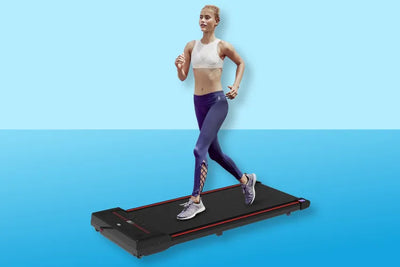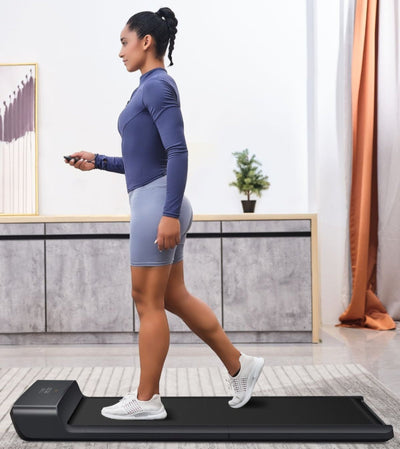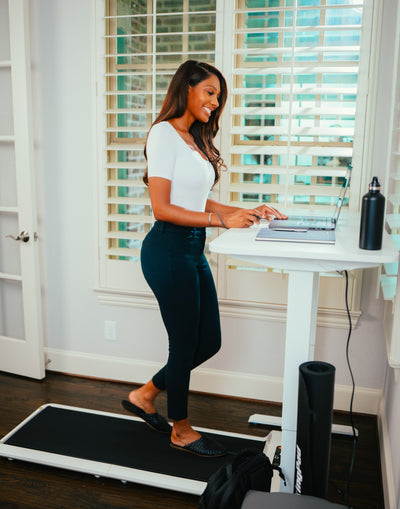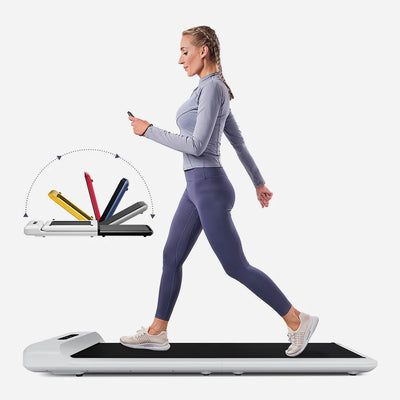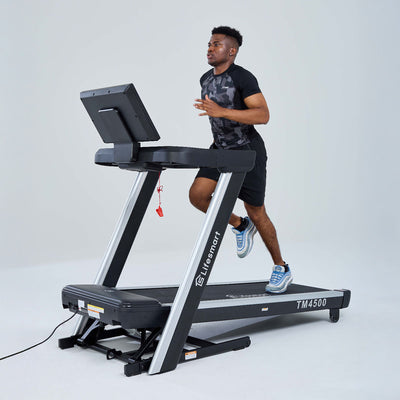Treadmill Training for Total Beginners: Your Path to Fitness Starts Here!

Ready to kickstart your fitness journey but not sure where to begin? Our beginner-friendly guide will help you confidently step onto the belt and unlock a world of health benefits.
Why the Treadmill is Your Best Friend
You might dream of hitting the open road, but for beginners, the treadmill offers a controlled and forgiving environment that's hard to beat. Think of it as your personal fitness coach, helping you maintain a consistent pace that matches your current fitness level. Outdoors, it's easy to push too hard too soon, leading to exhaustion, muscle soreness, or even injury – all major roadblocks to progress. The treadmill eliminates these worries, allowing you to build endurance safely and effectively.
Beyond easing you into running, treadmills offer a wealth of benefits:
-
Heart Health: Regular cardio strengthens your heart, improving circulation and reducing the risk of heart disease.
-
Weight Management: Burning calories on the treadmill is an excellent way to support your weight loss goals.
-
Stress Reduction: Exercise is a powerful stress reliever, helping you clear your mind and boost your mood.
-
Convenience: Rain or shine, day or night, your treadmill is always ready for a workout.
Getting Started: Treadmill Basics
Before you lace up and hit "start," let's go over the essentials of treadmill training.
What to Wear:
Just like an outdoor run, proper attire makes a difference. You'll want:
-
Comfortable running shoes: Good shoes are crucial for cushioning and support.
-
Workout clothes: Choose breathable fabrics that allow for freedom of movement.
-
Water bottle: Hydration is key! Keep water within reach.
-
Music or podcast: Stay motivated with your favorite tunes or an engaging story.
-
Small towel: Perfect for wiping away sweat as you get moving.
Basic Treadmill Settings:
While treadmills vary, they all share core functions: speed and incline. These are all you need for a fantastic workout.
-
Speed (mph): This controls how fast the belt moves.
-
2-4 mph: Typically a comfortable walking pace.
-
4-5 mph: A brisk walk or light jog.
-
5+ mph: Jogging or running.
-
-
Incline: This simulates hills by raising the front of the treadmill. A higher incline increases the challenge, engaging different muscle groups.
How to Run on a Treadmill:
Running on a treadmill is similar to running outdoors, but with a few key differences.
-
Maintain good posture: Keep your back straight, shoulders relaxed, and core engaged. Imagine a string gently pulling you upright from the top of your head.
-
Let your arms swing naturally: Avoid holding onto the sidebars, as this can disrupt your natural gait and reduce the effectiveness of your workout.
-
Listen to your body: Pay attention to any tension. If you feel yourself tensing up, consciously relax your shoulders and hands.
-
Use the safety clip: If you're increasing speed, always attach the safety clip to your shirt. If you stumble, it will immediately stop the treadmill, preventing falls.
Beginner-Friendly Treadmill Workouts
Ready to move? Here are two effective treadmill workouts designed for beginners.
Low-Intensity Steady State (LISS)
LISS is a fantastic starting point for anyone new to fitness. The goal is to maintain a steady, moderate effort for an extended period, typically 30 minutes to an hour, at about 60% of your maximal heart rate.
-
Finding your target heart rate: Subtract your age from 220, then multiply that number by 0.60. Many treadmills and fitness trackers will monitor your heart rate for you.
-
The beauty of LISS on a treadmill: The set speed allows you to get a great workout while enjoying a show or podcast. You'll be done before you know it, feeling energized and accomplished!
To perform a beginner LISS workout:
Set your treadmill to a high incline (9-12) and a moderately paced walking speed (around 3-4 mph). Maintain this for 30 minutes. This offers a great cardio workout without the impact of running.
Treadmill Interval Workout
Interval training is a powerful way to build aerobic endurance efficiently. It involves alternating between periods of higher exertion (to get your heart rate up) and periods of recovery (to catch your breath). This helps improve your cardiovascular fitness in shorter bursts.
Adjust the speeds below to match your fitness level. The key is to find what feels challenging but sustainable.
-
Warm-up (10 minutes): Start with a comfortable walk at 2-3 mph with zero incline. Focus on getting your muscles warmed up and your body ready.
-
Light Jog (3 minutes): Increase your speed to 4 mph for a light jog. Focus on good form: upright posture, engaged core, and relaxed hands.
-
Recovery Walk (2 minutes): Reduce your speed back to 3 mph for a recovery walk. Take a sip of water, breathe deeply, and roll your shoulders back.
-
Moderate Jog (4 minutes): Increase your speed to 5 mph. This should feel challenging but not completely exhausting. If it's too much, reduce the speed slightly.
-
Recovery Walk (3 minutes): Return to 3 mph for another recovery walk. You're over halfway there!
-
Faster Jog/Run (3 minutes): Push your speed to 5.5 to 6 mph. This is your highest intensity interval, so give it your best for these last few minutes. Modify the speed if needed to maintain your form.
-
Cool-down (5 minutes): Bring your speed down to 2.5 mph for a gentle cool-down walk. You did it!
The All-Important Cool-down
Once you've finished your workout, don't just hop off the treadmill! A proper cool-down is crucial for recovery. After your final walking segment, dismount the treadmill and find a comfortable space to stretch. Focus on major muscle groups like your hamstrings, quadriceps, and calves. (Check out resources on essential stretches for runners for more ideas!)
Remember to rehydrate and consider a protein-rich snack within 30 minutes of your workout to help your muscles recover and rebuild.
Every workout is a step forward on your fitness journey. The treadmill is your secret weapon! As a beginner, focus on building a solid foundation by listening to your body and mastering the basics. As you gain endurance, you can gradually increase your speed and explore more challenging workouts. Keep going – you've got this!



